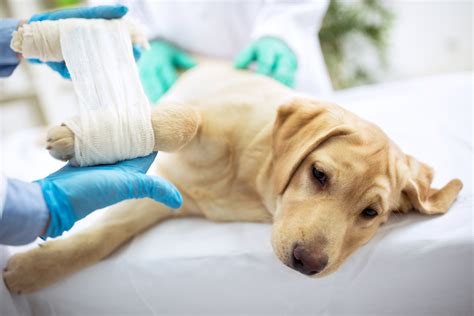The Essential Guide to Keeping Your Furry Friends Healthy and Happy
Introduction

Pets are an integral part of our families, and we want to keep them healthy and happy for as long as possible. Regular veterinary care, including medical procedures and nutrition, is essential for ensuring your pet’s well-being.
Medical Procedures
Veterinary medical procedures range from routine check-ups to more complex surgeries. Here are some common procedures:
- Vaccinations: Protect your pet from deadly diseases like rabies, distemper, and parvovirus.
- Spaying and neutering: Prevents unwanted litters, reduces the risk of certain cancers, and eliminates behavioral problems.
- Dental cleanings: Remove plaque and tartar to prevent gum disease and tooth decay.
- Microchipping: Helps identify lost pets and recover them safely.
- Emergency surgeries: Unexpected accidents or illnesses may require immediate surgical intervention to save your pet’s life.
Importance of Nutrition
Nutrition plays a crucial role in your pet’s health and longevity. A balanced diet provides the nutrients necessary for:
- Energy: To support daily activities, growth, and reproduction.
- Growth and development: Especially important for puppies, kittens, and pregnant or nursing pets.
- Immune function: To fight off infections and diseases.
- Healthy skin and coat: To maintain a shiny, lustrous appearance.
Choosing the Right Food
Selecting the best pet food for your companion’s needs can be overwhelming. Consider the following factors:
- Age: Different life stages have varying nutritional requirements.
- Weight: Obesity is a common problem in pets, so choose a food that supports a healthy weight.
- Activity level: Active pets require more calories than sedentary pets.
- Health conditions: Specific ingredients may be beneficial for pets with allergies, digestive issues, or other health concerns.
Transitioning to a New Food
Gradually introducing a new food over 7-10 days helps prevent digestive upset. Start by mixing small amounts of the new food with the old food, gradually increasing the proportion until the transition is complete.
Monitoring Your Pet’s Weight
Regularly weigh your pet to ensure they maintain a healthy weight. Overweight pets are more prone to health problems like diabetes, heart disease, and joint pain.
When to See a Veterinarian
Contact your veterinarian immediately if you notice any of the following:
- Loss of appetite: May indicate an underlying health issue.
- Vomiting or diarrhea: Can lead to dehydration and electrolyte imbalances.
- Changes in water consumption: Excessive thirst or decreased drinking can be a sign of illness.
- Lethargy or weakness: May indicate pain, discomfort, or a serious medical condition.
Conclusion
Regular medical procedures and a nutritious diet are essential for the health and well-being of your beloved pet. By following these guidelines, you can ensure that your furry friend enjoys a long, happy, and healthy life by your side.
Additional Resources
Infographics
Table 1: Common Pet Medical Procedures
| Procedure | Purpose | Frequency |
|---|---|---|
| Vaccination | Protect against diseases | Every few years |
| Spaying/neutering | Prevent unwanted litters and health problems | Once |
| Dental cleaning | Remove plaque and tartar | Every 6-12 months |
| Microchipping | Identify lost pets | Once |
| Emergency surgery | Treat life-threatening conditions | As needed |
Table 2: Essential Nutrients for Pets
| Nutrient | Role | Sources |
|---|---|---|
| Energy | Support daily activities | Carbohydrates, fats |
| Protein | Growth and development | Meat, poultry, eggs |
| Calcium | Healthy bones and teeth | Dairy products, green vegetables |
| Omega-3 fatty acids | Heart and immune system health | Fish, flaxseed, canola oil |
| Antioxidants | Protect against cell damage | Fruits, vegetables |
Table 3: Tips for Choosing the Right Pet Food
| Factor | Consideration | Example |
|---|---|---|
| Age | Different life stages have varying nutritional requirements | Puppy food for growing dogs, senior food for older dogs |
| Weight | Obesity is a common problem in pets | Choose a food that supports a healthy weight |
| Activity level | Active pets require more calories than sedentary pets | Look for a food with a higher calorie content for active pets |
| Health conditions | Specific ingredients may be beneficial for pets with allergies, digestive issues, or other health concerns | Consider a grain-free food for pets with allergies or a low-fat food for pets with pancreatitis |
Table 4: Signs of Health Problems in Pets
| Symptom | Possible Cause | Action to Take |
|---|---|---|
| Loss of appetite | Underlying disease, stress, dental problems | Contact your veterinarian |
| Vomiting or diarrhea | Food intolerance, infection, parasites | Withhold food for 12 hours, offer small amounts of water, and contact your veterinarian |
| Changes in water consumption | Diabetes, kidney disease, urinary tract infection | Contact your veterinarian |
| Lethargy or weakness | Pain, discomfort, serious medical condition | Contact your veterinarian immediately |





















